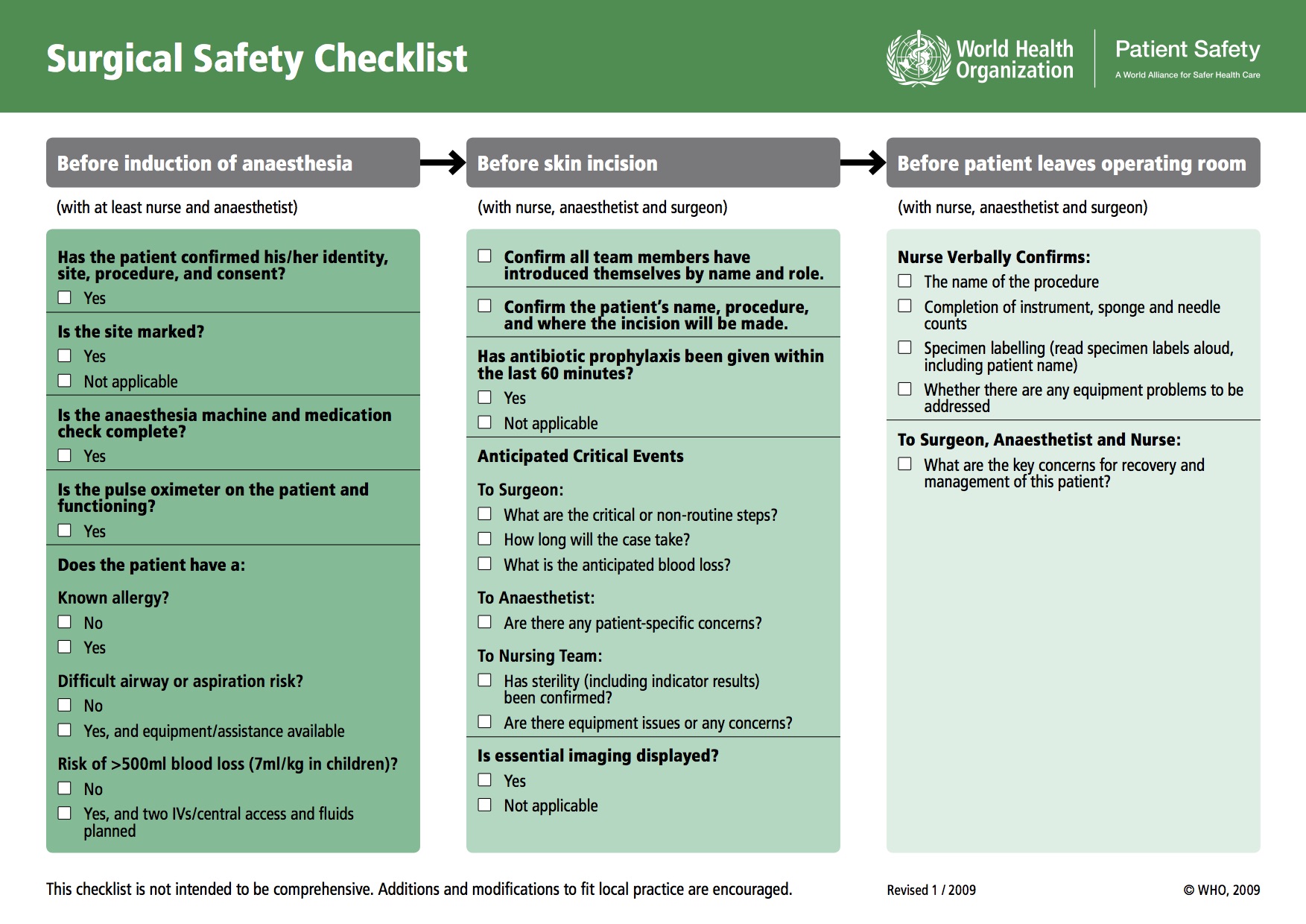1.2 Intraoperative Care
The intraoperative phase begins from the time the patient is admitted to the OR, the anesthesia is administered, the performance of the surgical procedure is completed, and the patient is transported to the recovery room.
• At the onset of the intraoperative phase, the most important preparation is to make sure that the patient knows and understands what is going to happen to them
• The Surgical Team participates in a surgical time-out: the point before induction of anesthesia where the patient’s name, birth date, operative procedure and site is confirmed BY THE PATIENT
• Patient assessment data required at the onset of the intraoperative phase includes NPO status, allergies and vital signs

Duties of the CDA during the intraoperative phase:
• Ensure patient’s safety, privacy, dignity, and confidentiality
• Ensure patient’s comfort
• Place protective eyewear on patient
• Ensure that vital signs monitors are in place
• Ensure that nasal oxygen cannula is in place (sedation)
• Administer or ensure patient skin prep (sterile procedure)
• Maintain the patient’s airway at all times during surgery
• Maintain patient throat pack at all times during surgery (sedation)
• Maintain chain of asepsis or sterility:
GLOVES ARE THE LAST ITEM TO PUT ON: The surgical assistant must not touch anything that is unsterile or without a barrier once gloves have been donned!
• Assist the surgeon: ensure that light is adequate, pass instruments, retract, irrigate (sterile saline), suction
• Remove throat pack (sedation) and place gauze pack(s) on surgical site(s) at the conclusion of surgery
NOTE: the first sense that returns to a patient following anesthesia is HEARING
